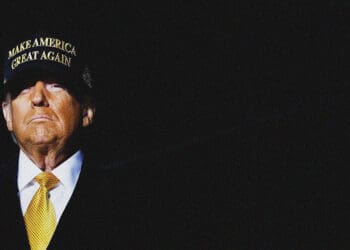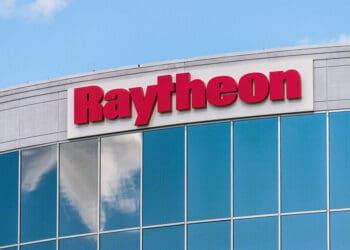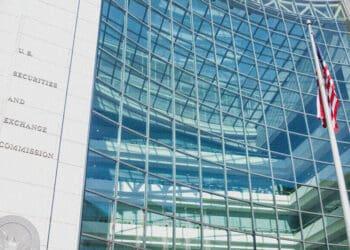Morrison & Foerster’s James Koukios and Amanda Aikman examine 10 ways in which the anti-corruption compliance landscape changed dramatically in the 2010s and explain why they expect those trends to continue.
As the decade of the 2010s closed, anti-corruption compliance and enforcement had become ubiquitous around the world. But the decade did not start that way. Underfunded enforcement agencies and underutilized or insufficient anti-bribery statutes were the rule, rather than the exception in 2010. Here, we discuss 10 key changes the anti-corruption landscape has undergone in the past 10 years.
1. Increased Foreign Bribery Resources and Enforcement in the United States
The beginning of the decade saw U.S. enforcement agencies significantly increase the resources dedicated to fighting foreign bribery, resulting in a dramatic increase in Foreign Corrupt Practices Act (FCPA) enforcement.
Increased Resources: In 2010, a new chief of the U.S. Department of Justice (DOJ) Criminal Division’s Fraud Section consolidated a relatively small number of full- and part-time FCPA prosecutors into an expanded FCPA Unit. Beginning with this consolidation, the number of full-time FCPA prosecutors increased more than tenfold over the next 10 years. Also in 2010, a new Enforcement Director at the U.S. Securities and Exchange Commission (SEC) centralized the leadership and coordination of FCPA investigations in an FCPA Unit, based primarily at SEC headquarters in Washington, D.C. By 2017, the unit was composed of over three dozen full-time staff. Midway through the decade, the U.S. Federal Bureau of Investigation (FBI) announced three new international corruption squads based in New York, Los Angeles and Washington, D.C. — and expanded to Miami in 2019 — to replace the one small FCPA squad that had been based in Manassas, Virginia (and which had split its time handling criminal antitrust cases in addition to FCPA matters).
Grand Corporate Cases: When the Organization for Economic Cooperation and Development (OECD) released its Phase 3 Report on the United States in October 2010, the evaluators noted that “[t]he creation of dedicated FCPA units in the DOJ, SEC and FBI allows economies of scale, concentrates expertise and helps guard against inconsistencies in approach.” The expanded resources and enhanced expertise contributed to a boom in enforcement actions in the 2010s — with 89 percent of penalties imposed in the history of the FCPA taking place in the last 10 years. For instance, while aggregate corporate penalties in the 2000s totaled over $1.8 billion, aggregate penalties in the 2010s totaled over $14 billion — a more than sevenfold increase. Similarly, the number of enforcement actions against corporate entities initiated by the DOJ and SEC more than doubled in the last decade compared to the prior decade.
Focus on Individuals: The increase in enforcement actions initiated against individuals by the DOJ and SEC was also significant. In the 2000s, for instance, the SEC and DOJ initiated more than 90 separate enforcement actions against individuals; in the 2010s, the number of enforcement actions against individuals climbed to more than 140.
With the resources in place, there is every reason to believe that aggressive FCPA enforcement will continue in the 2020s.
2. Increased Foreign Bribery Enforcement Around the Globe
A common criticism heard at the beginning of the decade, both domestically and abroad, was that the United States was the world’s only foreign bribery policeman. Indeed, Jay Clayton, who began the decade as a private practitioner and closed it as chair of the SEC, helped write a paper for the New York City Bar Association in 2011 criticizing the United States for its “unilateral and zealous enforcement of the FCPA.” But as the decade progressed, enforcement of foreign bribery laws became a multinational effort. In press releases issued during 2019 alone, the DOJ thanked enforcement agencies from 20 countries for providing assistance in FCPA investigations. As the decade closed, coordinated international resolutions became more common, with enforcement agencies from multiple cooperating countries announcing simultaneous resolutions, often agreeing to divide up the penalties amongst themselves. For example, in the 2010s, the United States brought coordinated foreign bribery enforcement actions with seven other countries — Brazil, France, the Netherlands, Singapore, Sweden, Switzerland and the United Kingdom — agreeing to divide nearly $10 billion in penalties, forfeiture and disgorgement — compared to one coordinated foreign bribery enforcement action in the 2000s. Several institutional factors, including prodding by multinational organizations such as the OECD, contributed to this trend and are likely to keep it going in the 2020s.
3. Operation Car Wash: The Largest Foreign Bribery Investigation of the Decade
Brazil’s Lava Jato investigation (also known as “Operation Car Wash”) is perhaps the decade’s leading example of international cooperation in the foreign bribery sphere. What began in 2014 as a small-scale, domestic money-laundering investigation involving gas stations in the southern Brazilian city of Curitiba exploded into a massive, international corruption investigation involving Brazil’s national oil company, Petróleo Brasileiro SA (“Petrobras”) and more than 70 countries. In Brazil, the sprawling investigation ensnared more than 100 Brazilian politicians, including four former presidents and nine of Brazil’s major construction companies. As of January 2020, Brazil’s Federal Prosecutor’s Office had indicted 484 individuals, resulting in more than 159 convictions in the State of Paraná (where Curitiba is located) alone. But Lava Jato did not stop at Brazil’s borders. The Lava Jato investigation reached current and former presidents in neighboring Argentina, Colombia, Peru and Venezuela. To date, Brazil reports that it has made or received more than 881 requests for cooperation in Lava-Jato-related investigations by 71 countries. This cooperation has resulted in massive coordinated enforcement actions against major oil services companies — and against Petrobras itself — by Brazil and countries such as the Netherlands, Singapore, Switzerland, the United Kingdom and the United States. Although there were indications that the political will for Lava Jato had started to wane as the decade came to a close, the impact of Lava Jato — both domestically and in the example it set for international cooperation — will continue to be felt for years to come.
4. Enactment of the U.K. Bribery Act and the Rise of the U.K. Serious Fraud Office
The U.K. started the 2010s with a complex, outdated and much-criticized patchwork of anti-bribery laws, parts of which dated back more than 100 years. According to the OECD, this framework hampered the U.K.’s ability to fight foreign bribery effectively. Largely in response to such criticism in the wake of the decision of the Serious Fraud Office (SFO) to close a high-profile investigation in April 2010, the U.K. enacted the Bribery Act 2010 (UKBA), which came into force on July 1, 2011. The UKBA became arguably the strictest foreign bribery law in the world, with expansive extraterritorial jurisdiction, a prohibition on both public and private bribery and a new corporate criminal offense for failing to prevent bribery. Multinational companies generally, and those with a footprint in the U.K. in particular, reacted strongly to the UKBA, expanding their compliance programs to account for these new provisions.
Following the enactment of the UKBA, foreign bribery enforcement increased significantly in the U.K. in the 2010s, notably due to the efforts of the SFO, which brought corporate and individual prosecutions, based on both the UKBA and other anti-bribery offenses, throughout the decade. While its debut in 2011 was dramatic, there has been some concern that enforcement of the UKBA has not been commensurate with the size of the U.K. economy, and the SFO’s trial record in foreign bribery cases has been mixed. Nevertheless, the UKBA and the SFO’s increased efforts had a dramatic impact on foreign bribery compliance and enforcement in the 2010s and must continue to be reckoned with in the 2020s.
5. The Proliferation of Deferred Prosecution Agreement Regimes
In its 2010 assessment of FCPA enforcement, the OECD Working Group on Bribery described the DOJ’s use of deferred prosecution agreements (DPAs) and non-prosecution agreements (NPAs) as two of several “[g]ood practices developed within the U.S. legal and policy framework that have helped achieve a significant enforcement level[.]” Although DPAs and NPAs are not without their critics — some say they are too lenient and therefore lack deterrent value, while others say they make it too easy for prosecutors to extract sizable corporate penalties based on cases that would not hold up in court — the OECD concluded that “[i]t seems quite clear that the use of these agreements is one of the reasons for the impressive FCPA enforcement record in the U.S.”
Following the DOJ’s successful use of DPAs and NPAs and spurred on by the OECD, several countries — including Canada, France, Singapore and the U.K. — adopted DPA or DPA-like regimes during the 2010s, while others — such as Australia — began to consider doing so. Several of these countries have made active use of their DPA regimes. From 2014 to 2019, the U.K. SFO concluded six DPAs, most of which covered bribery and conduct outside the U.K. Perhaps even more impressive given its reputation for recalcitrance in enforcing its foreign bribery law, France used its new DPA law in June 2018 to reach a coordinated foreign bribery resolution with the United States involving a major French company. The implementation of DPA regimes outside the United States was a major development of the 2010s, and, if they continue to be used aggressively, will significantly impact foreign bribery enforcement in the 2020s.
6. China: An Anti-Corruption Enforcement Hot Spot
Before 2004, there were no FCPA enforcement actions involving China. But in the 2010s, China was the country most frequently named in FCPA enforcement actions — in 21 DOJ actions and 49 SEC actions. And no other country was even close — Brazil was second with 30 combined DOJ and SEC enforcement actions. The trend of China-based FCPA enforcement actions increased as the decade progressed: 20 of the combined 70 DOJ and SEC enforcement actions took place in 2018 and 2019, and there is no reason to believe that this trend will slow down.
To date, no Chinese companies, other than subsidiaries or joint ventures of multinational companies, have been the subject of an FCPA enforcement action, but the DOJ appears to be interested in changing that: In the China Initiative, announced on November 1, 2018, the DOJ stated its intention to “[i]dentify Foreign Corrupt Practices Act (FCPA) cases involving Chinese companies that compete with American businesses[.]” We suspect that frustration with Chinese companies may also have motivated SEC Chair Jay Clayton’s September 2019 remarks regarding “other countries … [that] are … playing strategies that take advantage of our laudable [foreign bribery enforcement] efforts.” Clayton signaled that he would be pressing this issue with his international counterparts, perhaps somewhat mirroring the DOJ’s China Initiative.
For its part, China has been caught in a sweeping domestic anti-corruption campaign since President Xi Jingping assumed power in 2012. According to a whitepaper published by China’s State Council, almost 400 high-ranking, central government officials were investigated, disciplined or criminally prosecuted between December 2012 and June 2019. The number is significantly higher for lower-ranking officials: From January to November 2019 alone, the various levels of Supervision Commissions across China filed and investigated over 550,000 cases. For the most part, cooperation between China and the United States has been limited, although China has occasionally sought assistance to help repatriate kleptocrats and stolen funds. Nevertheless, domestic enforcement actions can spark international enforcement actions (see, e.g., our discussion of Lava Jato above), meaning that multinational companies operating in China must keep apprised of China’s anti-corruption efforts in the 2020s.
7. Development of FCPA Case Law
As FCPA enforcement ramped up in the 2010s, a common criticism was the lack of case law interpreting the Act’s key elements and a reliance on what some critics called “agency precedent” to justify what they viewed as the DOJ’s and SEC’s aggressive enforcement postures. This lack of judicial precedent was not an unfair criticism. Before the 2010s, there were less than a handful of decisions regarding the FCPA: In 1991 and 2004, respectively, the Fifth Circuit held in Castle that foreign officials could not be charged with conspiracy to violate the FCPA and clarified the FCPA’s “business purpose” requirement in Kay.
But as the DOJ and SEC ramped up their efforts to bring enforcement actions against individuals in the 2010s, the decade saw a number of notable FCPA decisions, many of which validated the agencies’ FCPA enforcement positions. Thus, courts held in Esquenazi that a state-owned enterprise can be considered an “instrumentality” of a foreign government; in Harder that a multinational development bank can be considered a “public international organization;” in Straub that an email sent from overseas across a U.S.-based server can satisfy the FCPA’s interstate nexus requirement; in Duperval that the “facilitating payment” exception has a narrow scope; in Bourke that a defendant can be convicted for consciously avoiding knowledge of a bribe; and in Ng Lap Seng that there is no “official act” limitation to the FCPA. But in Hoskins, the court rejected a government enforcement position, limiting the DOJ’s ability to use conspiracy and aiding and abetting theories to charge foreign employees of non-U.S. companies with FCPA violations. (Another court, in Firtash, upheld the DOJ’s use of conspiracy and aiding and abetting theories, setting up a potential circuit split.)
Although still not voluminous, these decisions helped clarify important aspects of the FCPA in the 2010s, and more decisions can be expected in the 2020s as individuals continue to go to trial, and appeal their convictions, on FCPA charges.
8. Publication of the FCPA Resource Guide
The DOJ and SEC jointly issued the landmark publication A Resource Guide to the U.S. Foreign Corrupt Practices Act (“FCPA Resource Guide” or “Guide”) in November 2012 in an effort to provide greater transparency and detailed guidance regarding the government’s approach to FCPA enforcement. In 1988, Congress directed the Attorney General to issue “guidelines and procedures” regarding the DOJ’s FCPA enforcement policy. Prior to issuance of the FCPA Resource Guide in 2012, this guidance was found in the “Lay-Person’s Guide to the Foreign Corrupt Practices Act,” a six-page self-described “brochure” by the DOJ and U.S. Department of Commerce that addressed only the FCPA’s anti-bribery provisions.
Following a 2010 recommendation by the OECD’s Working Group on Bribery, the DOJ and SEC sought to prepare more detailed guidance to “consolidat[e] and summaris[e]” existing information regarding the FCPA. The DOJ’s and SEC’s efforts also responded to criticism from the business community about the lack of transparency in FCPA enforcement. The FCPA Resource Guide was developed based on extensive consultations with the private sector and civil society, as well as input from the U.S. Departments of Commerce and State. At 120 pages, the Guide covers a variety of topics related to the FCPA and includes hypothetical fact patterns, examples of enforcement actions and summaries of case law and DOJ opinion releases. It explains key elements of the anti-bribery and accounting provisions and summarizes potential penalties and sanctions, types of resolutions and factors considered by the DOJ and SEC when deciding whether to open an investigation or bring charges.
Perhaps most importantly, the Guide also describes the DOJ’s and SEC’s views on the components of an effective compliance program, grouping them into 10 separate categories referred to as the “Hallmarks of Effective Compliance Programs.” The Hallmarks remain an important benchmark for companies’ compliance programs going into the 2020s. Given the development of additional case law, enforcement experience, compliance guidance and international enforcement, we believe that the Guide should — and likely will — be updated, as it is more than seven years old. With the OECD’s Phase 4 Review of the United States underway, a revised Guide may be released once again to address issues raised during the review process.
9. Growth and Sophistication of Anti-Corruption Compliance Programs
The effectiveness of a company’s compliance program has long been a relevant factor in charging and sentencing decisions in the United States — for instance, under the Justice Manual’s Principles of Federal Prosecution of Business Organizations and the U.S. Sentencing Guidelines, respectively — but anti-corruption compliance programs took on heightened significance in the 2010s as companies faced increased foreign bribery enforcement. Enforcement authorities increased transparency regarding their compliance expectations — such as the Guide’s Hallmarks discussed above and the more recent DOJ publication, Evaluation of Corporate Compliance Programs, released in 2019 — and the potential benefits of an effective compliance program in enforcement actions.
Under the FCPA Corporate Enforcement Policy, for instance, released in 2017 and updated in March 2019, a company’s “timely and appropriate remediation,” including “[i]mplementation of an effective compliance and ethics program,” creates a presumption that the company will receive a declination, provided that other criteria are satisfied. Compliance programs also became increasingly important outside the United States. As discussed above, the 2010 U.K. Bribery Act created a failure to prevent bribery offense, but it also provided for a full defense if a company can show that, despite a particular case of bribery, it had “adequate procedures” in place to prevent bribery. Other foreign anti-bribery laws enacted in the 2010s also adopted compliance-program focused provisions — France’s 2017 anti-corruption law requires French companies exceeding a certain threshold to have anti-corruption compliance programs in place that meet specified criteria, while Brazil’s 2013 Clean Companies Act provides that the existence of an effective compliance program can be a mitigating factor. Other jurisdictions have similarly released policy guidance addressing the elements of an effective compliance program, such as Brazil, France and the United Kingdom. Anti-bribery compliance programs will continue to play an important role in avoiding and mitigating foreign bribery enforcement actions in the 2020s.
10. Increase in Whistleblower Activity
During the 2010s, whistleblowers became an increasingly important part of the anti-corruption landscape. On the U.S. side, the establishment of the SEC’s whistleblower program in 2011 transformed whistleblowing from an unsophisticated hodgepodge of tips, often sent to the enforcement agencies from “burner” email accounts, to a more sophisticated process shaped by whistleblower attorneys eager to receive a portion of the nearly $400 million awarded to dozens of individuals in connection with enforcement actions resulting in more than $2 billion in financial penalties. From 2011 to 2019, SEC whistleblower tips increased by 74 percent, and the last few years of the decade saw a dramatic increase in award amounts, with the SEC issuing the four largest awards in the program’s history (totaling $159 million) in 2018 and 2019. Other countries have also encouraged whistleblowing. In October 2019, for example, the European Union’s Council of Ministers (the EU’s principal legislative body) adopted new laws to provide widespread protections for whistleblowers. And enforcement agencies globally have encouraged companies to offer ways for employees and business partners to report anti-corruption concerns internally. We expect that whistleblowing will continue to play an important role in anti-bribery compliance and enforcement in the 2020s.



 James M. Koukios is a co-head of
James M. Koukios is a co-head of  Amanda Aikman is a partner in MoFo’s New York Office and was formerly an Honors Attorney in the DOJ’s FCPA Unit. Among Amanda’s notable cases was United States v. Peterson, which demonstrated DOJ’s commitment to rewarding effective compliance programs, and United States v. Jefferson, in which a U.S. Congressman was prosecuted for violating the FCPA. Amanda was also responsible for researching and preparing the first comprehensive draft of the FCPA Resource Guide.
Amanda Aikman is a partner in MoFo’s New York Office and was formerly an Honors Attorney in the DOJ’s FCPA Unit. Among Amanda’s notable cases was United States v. Peterson, which demonstrated DOJ’s commitment to rewarding effective compliance programs, and United States v. Jefferson, in which a U.S. Congressman was prosecuted for violating the FCPA. Amanda was also responsible for researching and preparing the first comprehensive draft of the FCPA Resource Guide.










